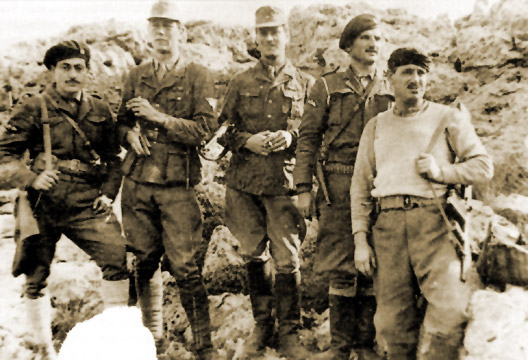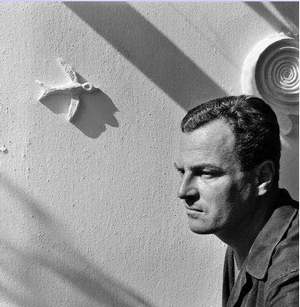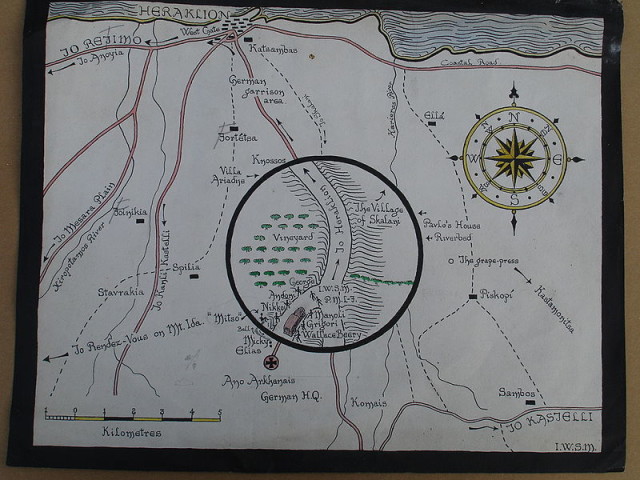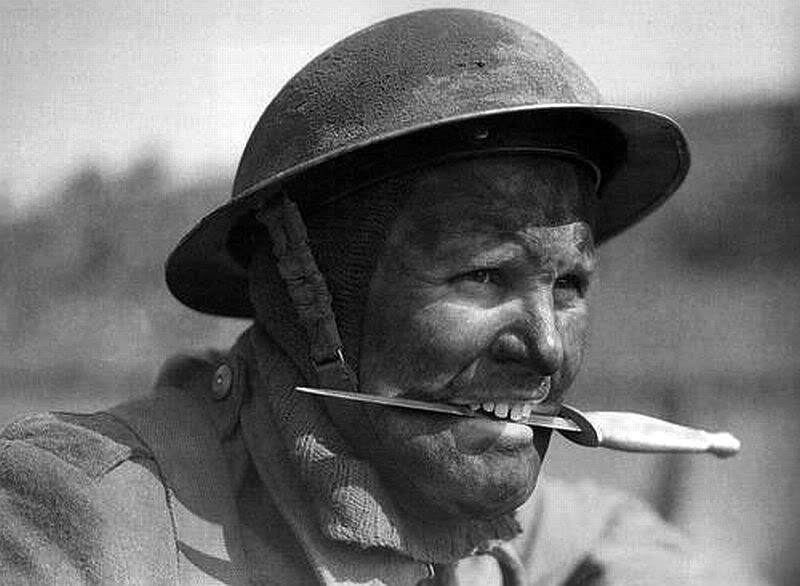The Special Operation Executive (SOE) in 1944, planned to conduct a daring mission in Crete. Their initial plan was to kidnap the German commander of the 22nd Air Landing Infantry Division, Friedrich-Willhelm Muller, who was at that time the notorious governor of the biggest island in occupied Greece.
Muller harassed the local population and held the island in a tight, tyrannous grip, earning himself the nickname The Butcher of Crete, he was very similarly in has actions as his infamous SS colleague Reinhard Heydrich in Prague.
There was an active resistance movement in Crete, which was supported by the British. The British and their Greek allies decided on a bold plan, to kidnap the Butcher of Crete and deal a blow the Germans on the island.
SOE officers Major Patrick Leigh Fermor and Captain Stanley William Moss were in charge of the operation and their counterparts were Greek SOE agents Georgios Tyrakis and Emmanouil Paterakis The mission also included co-operation with the Cretian resistance movement – The National Organisation of Crete.
The operation was launched on February 4th, when the group took off by plane from Egypt, planning to parachute into enemy territory. After arriving at the drop zone only Major Leigh Fermor managed to parachute successfully, despite bad weather conditions. He was immediately hidden by the resistance fighters and joined with an another SOE agent, a military adviser to the rebels, Sandy Rendel.
The other three members of the SOE group had to go back to Egypt and prepare for another landing effort. After three more attempts of parachuting into Crete, the SOE crew finally arrived via motorboat two months later in March 1944. In the meantime, General Muller was replaced.
While the British were trying to fetch Captain Moss and the others to help Fermor, complete the mission, Muller got transferred and became the Commander of a garrison stationed on the Greek archipelago of Dodecanese. Heinrich Kreipe took his place in Crete and the SOE decided to proceed as planned, only changing their target from Muller to Kreipe. The squad was complete and the abduction operation was in full effect.

General Heinrich Kreipe resided in a large house in the village of Knossos, the place which it is believed was once the location of the famous labyrinth. The labyrinth was the home of the vicious mythical creature, the Minotaur, in which he feasted on his victims. To add to the symbolism, General’s house was dubbed Villa Ariadne, named after Ariadne, the Cretan princess who, in legend, helped Theseus find his way out of the labyrinth. It is known that Kreipe was a great admirer of Ancient Greece, so his location might not have been a coincidence.
The rebels held a house right across the General’s villa and prepared for the snatching. Leigh Fermor disguised himself as a Cretan shepherd to get familiar with the terrain. He traveled on the local bus line to check Knossos and the area around the German headquarters. From his reconnaissance Leigh Fermor decided that the German headquarters would be too difficult to penetrate. In compliance with the intelligence data that they have gathered, the mission was set and the hunt for the Minotaur commenced.
On the night of April 26th, 1944, two British officers dressed as corporals of the German Military police, Feldengendarmerie, planning to intercept the General’s limo while on its way home. They were waiting for Kreipe’s car to arrive since they were stationed on a route he frequently used on the way to his residence. They pulled the car aside, presenting themselves as German policemen.

The General didn’t realize at first what was going on, but when Captain Moss struck the driver with a baton, leaving him dead, Kreipe understood very well that the SOE has come for him. Moss took the driver seat and Leigh Fermor was now impersonating the General. Tyrakis and Paterakis held Kreipe in the backseat while they passed the German checkpoints. They split up at Heraklion, an hour and a half later, after crossing 22 Nazi-controlled roadblocks.
Leigh left a document in an abandoned General’s limo stating that the abduction was conducted as an SOE operation and that the local population had nothing to do with it. This document was intended to convince the Germans not to carry out reprisals on the people of Crete.

Moss and the two Greek agents took Kreipe across the island where they were supposed to rendezvous with Leigh Fermor. Hunted by German patrols, they were forced to move through mountains rapidly, eventually they arrived at the southern side of the island, where the getaway boat was supposed to meet them.
On 14th of May, on a beach near the town of Rodakino, the SOE team was extracted together with General Heinrich Kreipe. On that same evening, they were transported to safety at the Allied-controlled port of Mersa Matruh in Egypt.
An interesting fact is that general Heinrich Kreipe was never popular among his men. Allegedly, after the Germans became aware of his abduction, one of the officers gave the following remark: “Well gentlemen, I think this calls for champagne all round.”
Postwar correspondence explains that Kreipe was disliked by his soldiers because, among other things, he objected to the stopping of his own vehicle at checkpoints. This tension between the General and his troops, in part, explains why the guards never bothered stopping the General’s car as Moss drove it through Heraklion. Allied propaganda efforts attempted to suggest that the kidnapping was a cover story and that Kreipe had actually defected to the Allies, possibly out of fear of death during an Allied invasion.
The Nazis didn’t retaliate immediately after the kidnapping. In August 1944, they’ve decided to call back the Butcher of Crete, Friedrich-Wilhelm Muller, who committed a massacre, later referred to, as the ‘Holocaust of Amari’, this atrocity happened in nine villages in the Amari Valley, which were all burned and their inhabitants shot.
The British certainly managed to capture Heinrich Kreipe, but the real Minotaur of Crete, General Muller, by chance escaped their grasp.
It was not until the end of the war that Muller was captured in Germany and extradited to Greece where he was found guilty of war crimes and executed in 1946.
